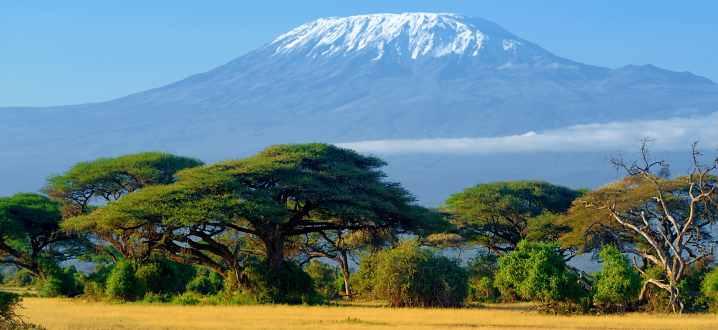
5 minute read
Homegrown Kenya - Richard Turere
HOMEGROWN
KENYA
Advertisement

Author: Kelly Marie-Martin

RICHARD TURERE
Cattle farming is big business in Kenya, whether it be commercial or subsistence, the industry is incredibly important for many. This can either be directly, through direct income made from the sale of meat or dairy products or indirectly, by feeding families and communities. The dairy sector alone contributes about 8% of Kenya's Gross Domestic Product (GDP) with approximately 3.43 billion litres being produced annually. Kenya's milk production contributes 3% of the 18% global production by Sub Saharan Africa. Furthermore, small holder dairy farmers make up to 80% of dairy producers and produce 56% of milk in Kenya. Beef production is also a profitable business, with a good cow fetching KSH 220 per kilo, which means one full-grown cow can go for approximately KSH 44,000.

Cattle farming is often done by pastoral communities and subsistence farmers in remote and largely natural environments. Cattle farming is often a critical part of life for these communities and therefore any loss can be a hard hit financially. Although potentially a lucrative business, it is not without its challenges. Communities have to contend with unreliable rainfalls, potential droughts, availability of land and poor soils which can lead to erosion and loss of nutrients. There are also other factors such as disease and pests and with limited capital to further develop the cattle farming industry in Kenya, the financial burden falls upon the farmers.
There is also another challenge that many communities have to face, the predation of cattle by lions. Often in these remote areas, communities live side by side Kenya's stunning wildlife. Tourists come each year to marvel at these beautiful wild animals, however, what many tourists do not know, is the challenge many Kenyans face from these very same animals. This is not isolated to just Kenya, many people face challenges with large predators eating livestock around the world. These losses can seriously impact people's everyday lives, furthermore, deterrents are often expensive and difficult to implement in these often rural and remote places. However, Richard Turere, a 13-year-old Maasai boy, living near to Nairobi National Park decided to tackle this issue head on. Richard Turere often looked after his father's cattle and would often witness lion attacks on his father's herd. Many communities after losing livestock from lion predation will contact Kenya Wildlife Services (KWS) to seek compensation, due to the high amount of claims KWS receive, the process can often be long and tedious. However, Richard started to explore how cattle predation could be humanely stopped altogether. Richard began to work with locally available materials, experimenting with potential deterrents.
First he used fire, but found that this actually aided the lions instead of hindered them, with the fire helping lions see through the cowshed and enclosures. He then tried scarecrows, but this only worked on the first day, by the second day, the lions soon realised that these 'human like' figures did not move and killed more cows. Richard soon discovered through his attempts that lions were afraid of moving lights, he got a bunch of LED lights and a car battery and set up a circuit of flashing lights.
Richard fitted a series of flashing LED bulbs on to poles around the cattle's enclosure. The LED lights face outwards, and from a distance, look like a torch being held by a human guarding the cattle at night. Ever since Richard implemented this simple and cheap solution, him and his family have not lost a single animal from their farm from lion attacks.
This simple and inexpensive method has global significance. Livestock loss due to predation is happening all over the world, from leopards, lions, tigers and jaguars, to name a few. These losses can be a huge burden, especially to communities such as Richards. Money and resources are often limited and can leave communities frustrated, frequently leading to the killing of these magnificent predators, as many farmers feel that is the only solution left. Additionally, with so much time invested in guarding livestock, this can take families away from other important tasks and even impact children's education, as children often need to stay off school to help on their family's farm. With Richards 'lion lights' this will not only ease pressures placed on these communities, but also reduce the killing of these beautiful and misunderstood animals.
Richard's invention has placed him in the international limelight, winning him an invitation to the TED 2013 conference. His invention is now being used throughout Kenya and has won him a scholarship to college. I think it is safe to say, the world needs more bright minds like Richard Turere!
Experience the magic of a safari in Kenya. Our 1 night Fly-In safari packages are designed to get you to the best camps in the shortest time, so you can spend more time enjoying the unique charm of the African wilderness.
Governers Camp MAASAI MARA
Sentinel Mara Camp
2 Days, 1 Night $990 Per Person sharing


2 Days, 1 Night $1,130 Per Person sharing
Ol Tukai AMBOSELI NATIONAL PARK Tortilis Camp
2 Days, 1 Night $990 Per Person sharing


2 Days, 1 Night $1,150 Per Person sharing
Satao Camp TSAVO EAST
Ashnil Aruba Lodge
2 Days, 1 Night $1,180 Per Person sharing


2 Days, 1 Night
$990 Per Person sharing
*prices are inclusive of return flights from Mombasa or Ukunda, full board accommodation, park fees, airstrip transfers & game drives Offer valid until 31st March, 2019. Subject to availability













